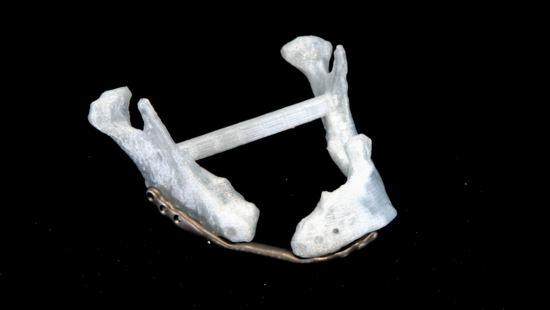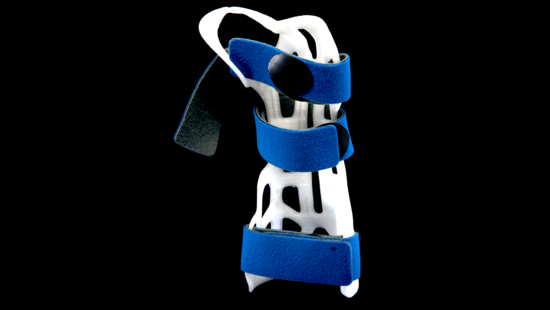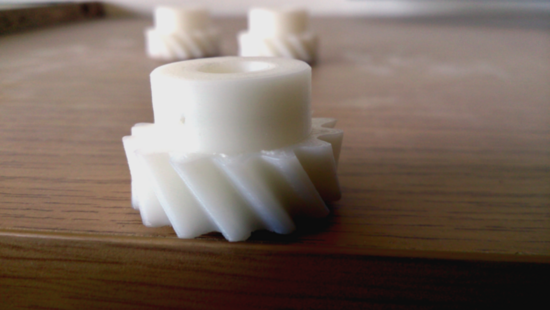
PETG Material Detail
General Informations
PETG is a popular filament for 3D printers. The "G" stands for "glycol-modified," a modification that makes the filament clearer, less brittle, and easier to work with. PETG represents a balanced compromise between ABS and PLA.
Why Choose PETG for 3D Printing:
- Excellent Mechanical Performance: PETG is exceptionally well-suited for the fabrication of mechanically stressed components, especially in larger sizes. It exhibits remarkable toughness and impact resistance, making it ideal for parts subjected to heavy wear and tear.
- Low Warping: PETG has a distinct advantage over ABS when it comes to reducing warping during the 3D printing process. Its lower propensity to warp makes it more reliable and easier to print, especially for larger and intricate designs.
- Versatility: Beyond mechanical applications, PETG offers versatility across a wide range of uses. It is widely employed in industries such as medical technology, where its properties shine in creating grippers, clamps, and other functional components.
- Translucent Aesthetics: While PETG is transparent, it's essential to note that in 3D printing, the layer-by-layer structure can diminish its translucency. Nevertheless, this property can still be appealing for certain designs and aesthetic purposes.
By choosing PETG, you benefit from a material that strikes a balance between the durability of ABS and the ease of use of PLA. Its excellent mechanical properties, resistance to warping, and versatility make it a top choice for various 3D printing applications, particularly when the printed parts face significant mechanical stress or come in larger sizes.
Printing in PETG
Minimum Wall: 1 mm
Smalest Detail: 0.4 mm
Layer hight: 0.2mm
Max Print size: 256 x 256 x 256 mm
Tollerance: 0.2% min ±0.3 mm
Delivery Times: Typicaly 4-5 Businessdays

Pro`s and Con`s
Pro
• High Durability: PETG is known for its exceptional durability, making it suitable for a wide range of applications.
• Heat Resistance: PETG retains its strength and integrity at elevated temperatures, expanding its usability.
• Weather Resistance: It withstands moisture and environmental factors, making it a good choice for outdoor use.
• Food-Safe: PETG meets food contact standards, ensuring safety for food-related applications.
• Translucent: PETG offers partial transparency, adding aesthetic appeal for specific designs.
• Biocompatible: Suitable for certain medical and industrial applications.
• UV Stability: PETG exhibits reasonable UV resistance, suitable for outdoor applications.
• High Tensile Strength: PETG offers high tensile strength for load-bearing components.
Con
• UV Instability: PETG is not highly resistant to UV light and may experience color changes over time.
• Lower Resolution in FDM Process: PETG may offer lower resolution in fine details when using the Fused Deposition Modeling (FDM) process.
• Not Ideal for Very Large Prints: PETG may not be the best choice for very large components requiring high stability.
• Challenging to Post-Process: PETG can be more challenging to work with during post-processing and modifications.
Applications of PETG 3D-Print



Examples of PETG 3D Printing Applications
- Concept and Functional Components
- Food Packaging
- Chocolate Molds
- Grippers
Applications in Research and Medical Technology:
- Laboratory Equipment: PETG can be used to create custom laboratory equipment, such as sample holders, test tube racks, and vial holders.
- Medical Prototypes: PETG is suitable for prototyping medical devices and components, such as prosthetic parts, dental models, and orthopedic aids.
- Surgical Guides: It can be employed to produce surgical guides for precision procedures in the medical field.
- Research Models: PETG can be used to fabricate models and prototypes for research purposes in various scientific disciplines.
- Medical Instrument Housings: PETG is ideal for producing housings and enclosures for medical instruments and devices due to its durability and biocompatibility.
Technical specifications
General Properties
Property | Test Method | Value |
Density | ISO 1183, GB/T 1033 | 1.24 g/cm3 at 23°C |
Melting Point | 210°C, 2.16kg | 17.1 g/10min |
Light Transmission | N/A | N/A |
Flame Resistance | N/A | N/A |
Moisture Absorption | 70% RH – 23°C | 0.542% |
Mechanical Properties
Property | Test Method | Value |
Elastic Modulus (X-Y) | ISO 527, GB/T 1040 | 1523 ± 50 MPa |
Elastic Modulus (Z) | ISO 527, GB/T 1040 | 1603 ± 40 MPa |
Tensile Strength (X-Y) | ISO 527, GB/T 1040 | 31.7 ± 0.1 MPa |
Tensile Strength (Z) | ISO 527, GB/T 1040 | 29.4 ± 1.0 MPa |
Elongation at Break (X-Y) | ISO 527, GB/T 1040 | 4.43 ± 0.6% |
Elongation at Break (Z) | ISO 527, GB/T 1040 | 3.10 ± 0.51% |
Flexural Modulus (X-Y) | ISO 178, GB/T 9341 | 1068 ± 94 MPa |
Flexural Modulus (Z) | ISO 178, GB/T 9341 | N/A |
Flexural Strength (X-Y) | ISO 178, GB/T 9341 | 58.3 ± 0.38 MPa |
Flexural Strength (Z) | ISO 178, GB/T 9341 | 55.1 ± 4.9 MPa |
Impact Toughness (Charpy X-Y) | ISO 179, GB/T 1043 | 9.7 ± 2.6 kJ/m2 |
Impact Toughness (Charpy Z) | ISO 179, GB/T 1043 | 2.4 ± 0.6 kJ/m2 |
Thermal Properties
Property | Test Method | Value |
Glass Transition Temperature | DSC, 10°C/min | 79°C |
Melting Temperature | DSC, 10°C/min | N/A |
Crystallization Temperature | DSC, 10°C/min | N/A |
Decomposition Temperature | TGA, 20°C/min | 373°C |
Vicat Softening Temperature | ISO 306, GB/T 1633 | 82°C |
Heat Deflection Temperature | ISO 75 1.8MPa | 72.3°C |
Heat Deflection Temperature | ISO 75 0.45MPa | 75.7°C |
Thermal Conductivity | N/A | N/A |
Thermal Shrinkage | N/A | N/A |



